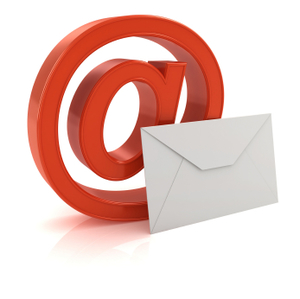 Webapps Online |
Webapps Online
10 Tips for succes with email campaigns
Dated Sunday January 15, 2012

Since the "invention" of social media, the digital newsletter has lost its glamour amongst marketeers. But while most companies struggle to get any result from their social media efforts, the newsletter is still almost as effective as in the old days. 10 tips to get more results from that good old marketering tool, mail:
Tip 1: timing is everything
Newsletters are only interresting if they arive on the right moment. The receiver must be in the right state of mind. And when might that be? Unfortunately there are no golden rules. But with some common sence you can get the first clues. For a lot of companies office supplies are ordered on monday. Travels and hotels are mostly booked in the weekends. But in the end, it is all a mather of testing. Try different times and different days of the week. Monitor your open rates. After a while, you will know when your customers want to hear from you.
Tip 2: Write for your audience
To main reason you send out newsletters, is to promote your products or services. Your subscribers subscribed because they want hear about the latest offers. It seems like you're on the same page, but that isn't entirely true.
When you write about your product, only mention what is beneficial to your customers. Don't tell them all the details. We know you are proud of the latest product in your line, but your customers only want to know if it is interresting for them to buy. Are you cheaper then the competition? Do you offer a higher quality products? Are you the only supplier in the region? That is all they need to know.
Tip 3: Spelling and grammer
We know you know. But do you always take the time to double check? To read your texts one more time? Please do, because it pays of. Having spelling and grammar errors in your newsletter gives your subscribers the impression you couldn't be bothered to put in the effort. Then why should they put in the effort of reading the newsletter? And the spelling and grammar error draw attention away from the message you are trying to convey.
Next to the spelling and grammar issues you always might check the tone of voice you are using. Are you formal enough? Or may be to formal? Try to apeal to your audience.
Tip 4: The design of your newsletter
A typical newsletter is composed out of for parts:
The header
The header is visible in the the preview window of mail clients. It is the top part if the newsletter. Because it is directly visible it needs to convince the viewer that there is more in the newsletter, that is worth reading. Does your newsletter have a single goal, for instance event registration? Convey your message in the header.
The teaser
The teaser is a short introduction giving the reader an idea what to expect from the newsletter. Keep it short and simple. Just say why the newsletter is worth reading and why this mail is other then the previous mail. Try to stay within 3 lines.
Content
The articles, products or offers. Keep each very short and include a link to the full article or productpage on your website. This way the reader can scan the newsletter and pick the article or offer of its choice.
Final call to action
Your subscribers seem to read the entire newsletter, they must be interested. Don't wast this opportunity! Include links to your webshop, contactform, extra offers or social media channels. Give your subscribers extra options to engage.
Tip 5: Link vanuit de nieuwsbrief naar je website
Een nieuwsbrief heeft als doel meer mensen op de hoogte te brengen van de nieuwste ontwikkelingen in jouw bedrijf. Je wilt echter ook dat je abonnees iets met die informatie doen. Iets bestellen, je website verder bekijken of contact opnemen. Dit is vrij lastig te bereiken vanuit de nieuwsbrief zelf. Zorg dus dat je abonnees naar je website gaan. Plaats een korte intro voor elk artikel in de nieuwsbrief met een link naar het volledige artikel op de website. Op de website kun je aan het einde van het artikel doorverwijzen naar je webshop of contactformulier.
De korte artikelen met een link in de nieuwsbrief hebben nog twee andere voordelen. Ten eerste houdt het de nieuwsbrief kort. Je abonnees kunnen vlug scannen of er een interessant artikel tussen zit en alleen deze verder lezen. Dit maakt de nieuwsbrief veel prettiger om te lezen.
Ten tweede is elke klik naar de website meetbaar. Je kan dus zien hoe de reactie is op de nieuwsbrief, en hierop de timing van het versturen aanpassen (zie tip 1). Ook kun je het verschil meten tussen verschillende artikelen in de nieuwsbrief. Deze informatie kun je weer gebruiken voor het opstellen van de volgende nieuwsbrief.





